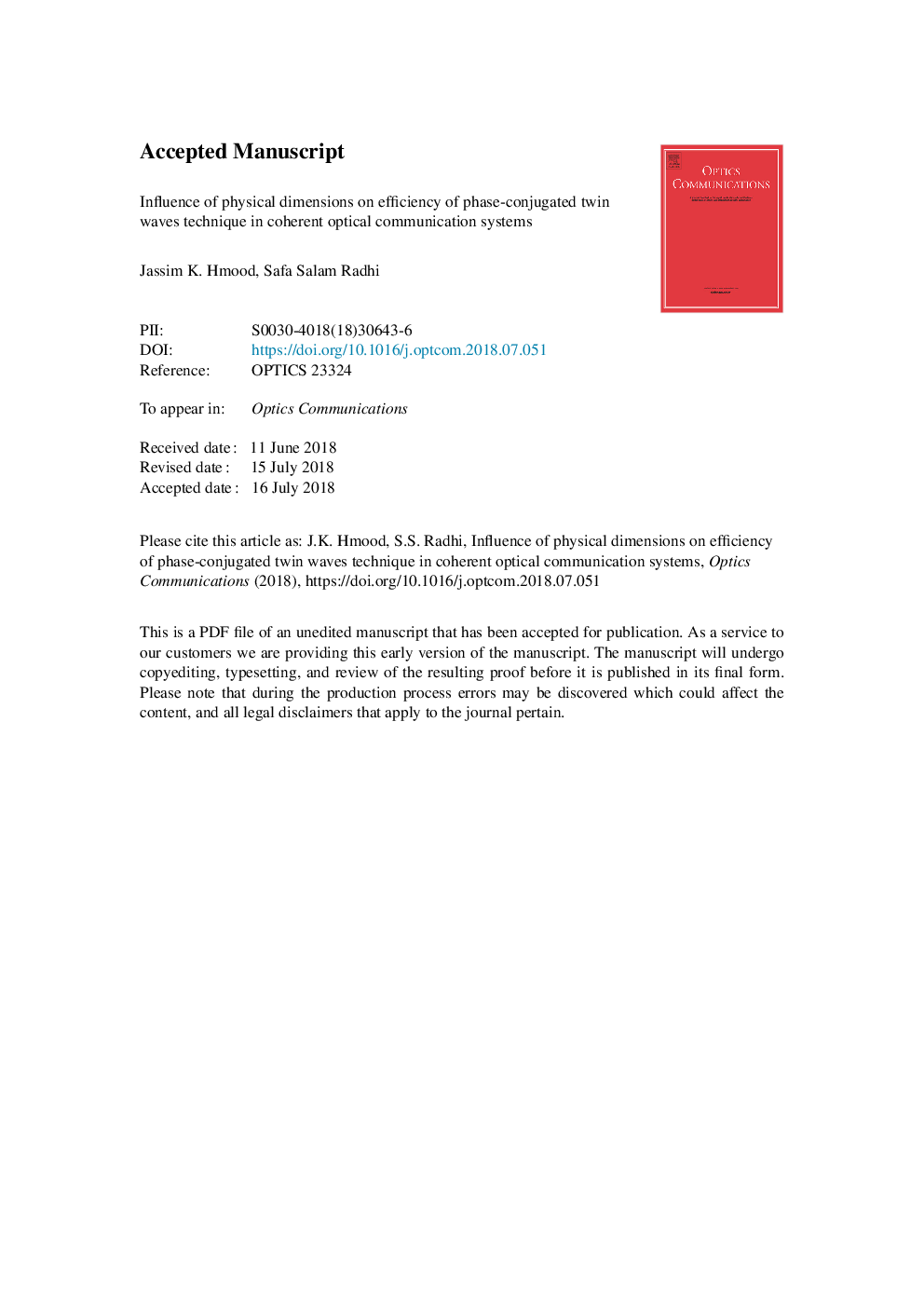| Article ID | Journal | Published Year | Pages | File Type |
|---|---|---|---|---|
| 7924519 | Optics Communications | 2018 | 16 Pages |
Abstract
The potential of phase-conjugated twin waves (PCTWs) technique has increased interests in optical communication systems due to its ability to mitigate the fiber nonlinearity. In this paper, the influence of the multiplexing dimensions of twin waves on the effectiveness of PCTWs technique is analytically modeled and numerically investigated. Moreover, the analytical models that characterize the phase noise suppression in both spatial and frequency domains are developed. In the spatial dimensions (SD), the 20 Gsymbol/s quadrature phase shift keying (QPSK) signal and its phase-conjugated copy are spatially multiplexed though two identical optical fiber channels, while in frequency dimensions (FD); these waves are multiplexed and sent through the same fiber channel. At receiver, the signals are coherently superimposed to cancel the nonlinear phase noise and enhance the signal to noise ratio (SNR). The results show that the mitigation efficiency of the PCTWs technique is governed by the physical dimensions of propagation. The PCTWs technique in SD system can achieve better performance than that in FD system. The achievable transmission distance is extended by 77.8% for SD system and 44.5% for FD system at bit error rate (BER) of 10â5.
Related Topics
Physical Sciences and Engineering
Materials Science
Electronic, Optical and Magnetic Materials
Authors
Jassim K. Hmood, Safa Salam Radhi,
